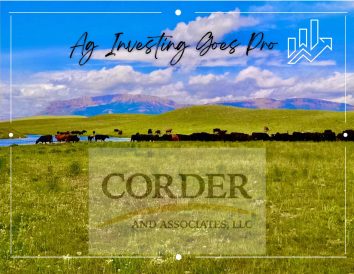Investments in agricultural land are gaining some recognition on a unique platform! Real estate has always been an efficient way to diversify an investment portfolio and can provide regular cash flow from rental property. If you’re new to investing in the real estate market, try starting with REITS or crowdfunding. REITs are real estate investment trusts that are investments in real estate companies that buy, hold, and usually manage commercial real estate. Experienced investors jump in and purchase real estate, whether residential or commercial. This type of investing isn’t tied to the stock market, so it’s different when the market falls. These investments can help you reach your financial goals and provide passive income.
WHAT IS THE VALUE OF LAND?
The American dream is often thought of as owning a piece of land in the country and prospering from it. The lack of inventory in today’s market makes acquiring land a little trickier. Sales have definitely cooled in the Rocky Mountain states since 2021, when land would hit the market and be under contract within hours. States like Montana saw record-breaking sales at that time due to the pandemic and the mass relocating out of the crowded cities. In addition, the show Yellowstone romanticizes life on a ranch in Montana, and its popularity has buyers flocking to find a seductive ranch to fulfill their dreams. The market has changed. We have seen some price reductions, but sellers still want to see those prices from the epidemic. Buyers aren’t necessarily willing to offer those prices as the market is correcting. There is a substantial gap. Andy Rahn is the creator of Montana Land Source and reports that the median listing price is $2,318 per acre currently. That is 15% higher than the 2021 listing prices. In contrast, the median sales price per acre is $1,288 in 2023, down 33% from the 2021 highs. Between the median list price and the median sale price is a spread of $1,030 per acre. In 2021, the gap was more like a mere crack with a spread of only $239 an acre.
BIG RANCHES VS. SMALL TRACTS
The sales of larger high-end luxury ranches don’t see the same gap in list and sales price and are still attracting qualified buyers. Those sales are continuing to procure top dollar. Doesn’t the hike in interest rates affect the big agricultural tracts or even recreational land deals? Buyers in Montana who are looking for those big farms and ranches aren’t financing, so interest rates don’t play a role. The Montana market is dominated by cash buyers, making it difficult for the local producer wanting to expand operations to finance such sales. The investors that purchase have other means of income and don’t need to involve a third-party bank. Land sales are becoming popular as investors shift their perspectives. Purchasing a luxury townhouse in New York isn’t as viable as purchasing an expansive ranch with hunting opportunities and an entire ecosystem at work.
AG INVESTING GOES PRO
Investing in agriculture has gained some attention and has gone mainstream as farmland investments are getting the recognition long deserved for demonstrating strong returns and low volatility. In 2023, a group of pro athletes searched for diverse agricultural assets to invest their earnings strategically. At the beginning of the year, Joe Burrow of the Cincinnati Bengals NBA player Blake Griffin and 20 other pro athletes from the NFL, NHL, NBA, and MLB chose to invest in agriculture and purchased a farm in northern Iowa for approximately 5 million dollars. The farm produces corn and soy-focused products. The athletes aspired to support American farms and farmers through such an investment.
WHY NOW IS THE TIME
Investing in agriculture provides long-term and predictable returns. The risk is low. Since 1991, farmland has offered a consistent rate of return, averaging 10.74%. When the stock market sees lows and values decrease, farmland sees minimal effects and holds its value. Investing in ag allows for value growth. Cropland and farm real estate is seeing growth as values increased immensely from 2021 to 2022, from 12.4% to 14.3%. There’s always demand for farm ground as the world continues to demand food. Investing in farms and ranches is safer and offers diversification. If recession looms, land values rarely see direct and impacting effects. Such investments allow patrons to make a positive change and support farmers and ranchers.




